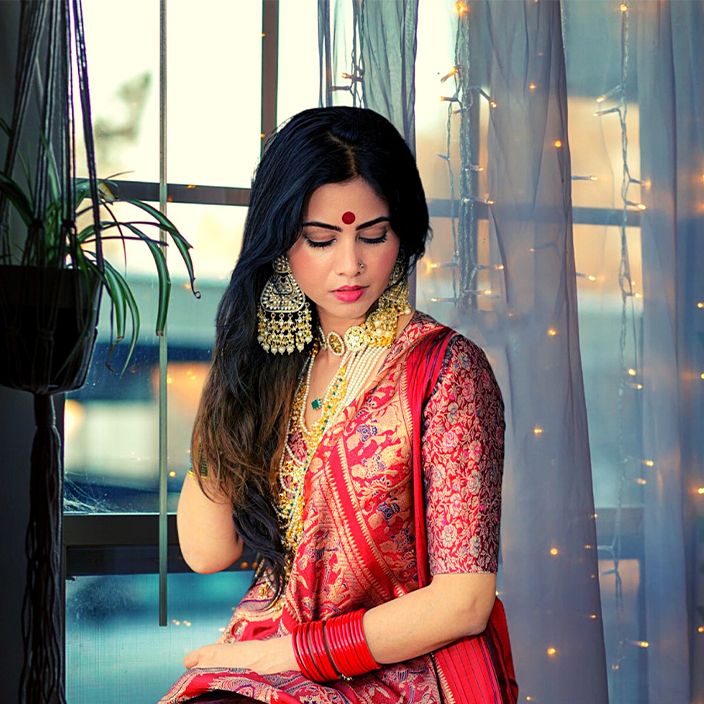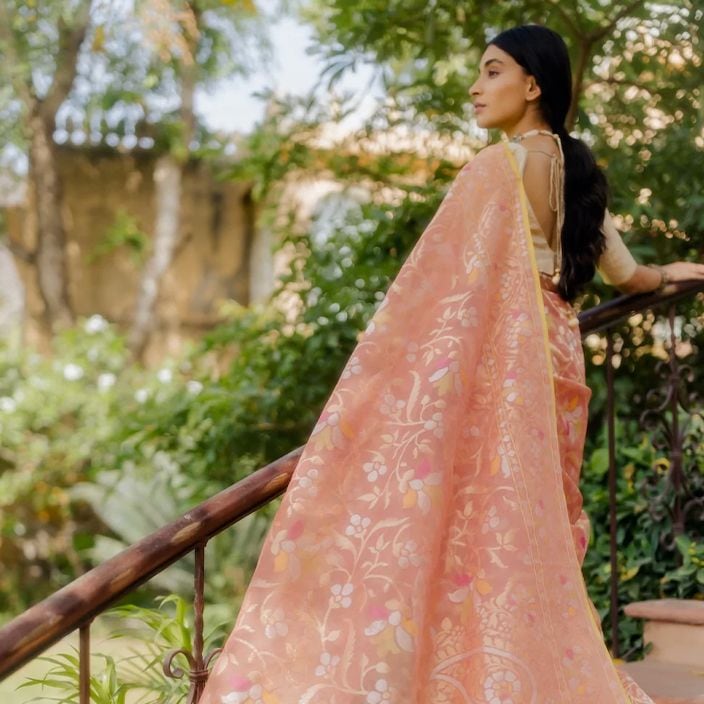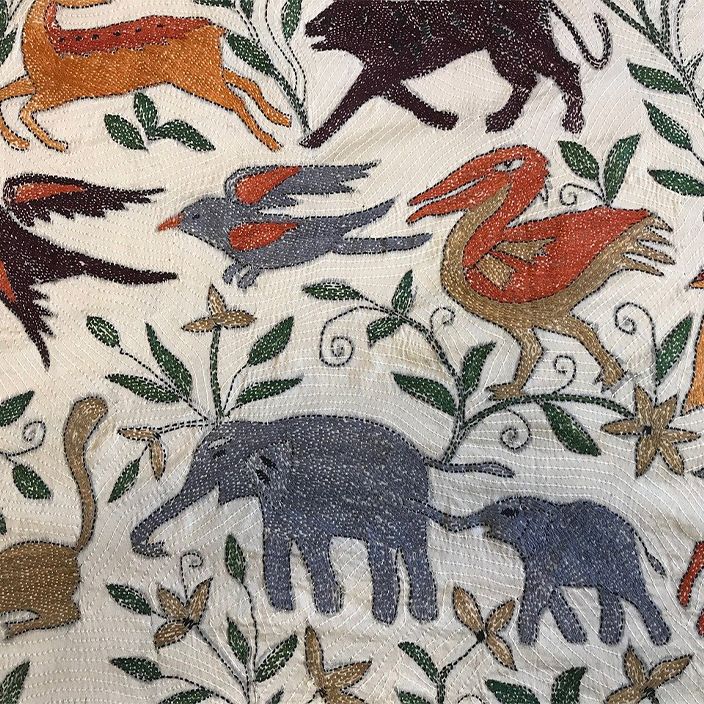For best prices and early deliveries, WhatsApp us at. 918488070070
West Bengal
West Bengal shares its old-world charm and cultural influences with Bangladesh (earlier known as East Bengal). This heritage-rich Indian state is on an accelerated path to becoming India’s fashion hub. Fashion, as subjective as it may seem, is ever-changing, making room for west bengal dressing style to emerge as the years continue to pass by.
Traditional West Bengal Clothing
Women
Before the 1850s, in the pre-colonial era, Bengali women were often seen with a single piece of fabric draped around their body. Under this fabric, no undergarments were worn. Later, under British rule, the way women wore a saree underwent a significant change. Under the fabric, blouses or jama (undershirt) and shaya (petticoat) started to be worn. This particular way of wearing a saree began to be known as Brahmika, originally inspired by the Parsi Gara saree worn by both Gujarati and Parsi women.
From the 1950s to the 1980s, the trend of wearing stockings and angiya cachali with sarees emerged. It was further personalized by using different saree pins and brooches to pin the anchol over the shoulder. The late 19th Century brought forward a new clothing item called a mantilla, which is basically a veil or shawl worn on top of the head and over the shoulders. Inspired by European fashion, this item was usually made out of lace.
Men
The traditional dresses of west bengal men is a ‘panjabi and dhoti’ which is the state’s equivalent of a North-Indian kurta and pyjama. It is called so because it was inspired by the actions of Punjabi in the 17th Century. The Khatri Punjabi had travelled to Bengal as merchants and bought land there, becoming zamindars in today’s Bardhaman district. Since they had to supervise labour workers, moving around on the field in hot and humid climates was a part of their job. Hence, they preferred to wear light clothes that were longer in length, ensuring that their dhotis didn't get dirty. As an outcome, the traditional West Bengal clothing of men was inspired by Punjabi culture, and a few distinctive features were added to make the attire of west bengal truly Bengali.
‘Panjabi’ is basically a kurta that can either be short or long enough to reach the knees. It is made with genuine Bengali fabric like Tussar silk, muga-silk and cotton-silk with Kantha embroidery over the neck and buttons. Kurtas made from Garad silk in shades of honey, beige and cream are typically worn for special occasions like weddings.
Today, men are seen wearing a ‘Punjabi’ with jeans, chinos and trousers to add a modern twist to their attire. This fusion has kept the traditions in place while blending in contemporary styles and comfort together.
Staple Jewellery & Accessories
Over the years, West Bengal has been introduced to various cultures with the migrants, Hindu Rajas, Muslim influences, and colonization by the British. This led to the state having an inherently rich culture reflected in its art, clothing, architecture, jewellery and much more.
West Bengal’s traditional jewellery is primarily made of gold and precious stones that give it a unique touch.
A patti haar is a heavy necklace worn by women during festivals and occasions like weddings, family functions, and Durga Puja. It is intricately designed with gold. Jhumko are chandelier earrings, with beautiful floral motifs that make them particularly suited to modern and traditional outfits. The nath is a gold nose ring, whose size is determined by the wearer’s family’s financial status. It is mainly worn by Bengali brides during their weddings, making it one of the most worn jewellery items in the state. A tikli is made from gold, and worn as a headpiece by brides. Precious stones are also seen on this jewellery piece.
Inspired by the British, one of the most famous Bengali jewellery is the crown, also known as ‘shonar mukut’. It is worn on the head, and adds a regal look to the bride’s overall attire. Another kind of traditional jewellery is a choker, generally made with gold, diamonds and pearls. Shaped as an actual human ear, kaan is worn on the ear by women during family events and weddings. On the other hand, kaan bala resemble hoop earrings, and are inspired by the shapes of bangles (worn on wrists). Elegantly crafted, a chur is an elaborate, traditionally worn bracelet made out of gold. Lastly, the ratanchur is worn on the hands, and has five-finger rings individually attached with chains that connect it to the bride’s wrist or arm.
Fashion Evolution
In spite of the countless changes brought in by modernization, the one factor that has remained the same all throughout is a saree. There have been several subtle changes in the styles which have not gone under the radar. The fashion evolution in West Bengal, influenced by various cultural and historical factors, has seen the incorporation of traditional Odisha textiles and designs in recent times. Traditionally, a Bengali saree style is white, and made out of silk or cotton, with prominent red borders. This certain saree is also commonly known as Korial Lal Paar saree, and considered to be both quintessential and propitious for the state. It is worn during the Durga Puja, where the outfit is highlighted with a big red-coloured bindi, and sindoor (for married women).
Fabrics used in Bengali sarees vary from muslin, Tussar, Kanth, and Murshidabad silk depending on the occasion it will be worn for.
The likes of jamdani, baluchari, tant, and garad amongst many others are types of traditional clothes of west bengal donned by Bengali women. In the present, modern designers have altered the conventional look to showcase a more unique and modern take on the clothing. Often, it is dubbed as ‘classic meets cool’ by the media to encourage an active interest in the way culture can be followed while integrating contemporary practices.



